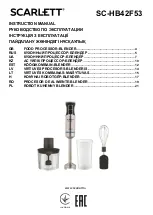
1. Introduction
The CANBERRA Model 9660 Digital Signal Processor represents the state of the art
in high rate/high resolution pulse processing subsystems for gamma spectroscopy. Us-
ing high speed DSP circuits and sophisticated filtering algorithms, the Model 9660 re-
places the traditional shaping Amplifier/Analog to Digital Converter (ADC)
combination in traditional analog based spectroscopy systems.
The Model 9660 accepts programming information over the 8-bit wide CANBERRA
Instrument Control Bus (ICB). ICB NIMs connect to this bus via a host module such
as the Model 556 Acquisition Interface Module (AIM) as part of a hierarchy of net-
worked acquisition and control managed by a Genie family computing platform.
With traditional analog signal processing, the detector signal is amplified, shaped, fil-
tered and baseline restored by the shaping amplifier. The signal is then digitized by the
ADC at the end of the processing chain. The Model 9660 performs pre-conditioning
and amplification of the signal presented by the preamplifier, then digitizes the signal
directly at a very high sampling rate. The filtering, baseline restoration and optimiza-
tion processes are then applied to the digitized data using real time digital processing
algorithms. This reduces noise effects while making possible the use of more efficient
and sophisticated filtering algorithms than can be achieved in the analog domain. The
net result is a reduced processing time for better throughput with improved resolution
and enhanced stability.
The weighting function applied in the Model 9660 filter algorithm produces a sym-
metrical and near ideal Triangular/Trapezoidal filter function. Trapezoidal shaping re-
quires less processing time for equivalent resolution obtained with semi-Gaussian
shaping. The result is less dead time, less pileup, more events processed and higher
throughput. Conversely, superior resolution results when the trapezoidal processing
time is increased to match a particular semi-Gaussian processing time. The duration of
the trapezoidal flat top can be automatically or manually adjusted to eliminate detector
ballistic deficit and charge collection effects. Triangular shaping is optimal for small
detectors which don’t exhibit ballistic deficit or charge collection irregularities and is
obtained by reducing the trapezoidal flat top to zero.
With the Model 9660, users can achieve count throughput rates in excess of 100 000
counts per second. In general the trade off between resolution and throughput is unsur-
passed when compared to traditional analog electronics. For example, a trial run com-
paring the fastest available analog system, the CANBERRA 2024 Amplifier and 8715
ADC to the 9660 produced a peak resolution of 2.4 FWHM at 70 000 cps for the
9660-compared to 2.6 FWHM for the 2024/8715.
Traditionally, the spectroscopist had to make tradeoffs between resolution and
throughput – the higher the throughput, the poorer the resolution and vice versa. While
this tradeoff still occurs, the 9660 user will observe higher overall throughput or better
resolution at a lower throughput than with analog electronics.
User’s Manual - ICN 9231014G
1








































